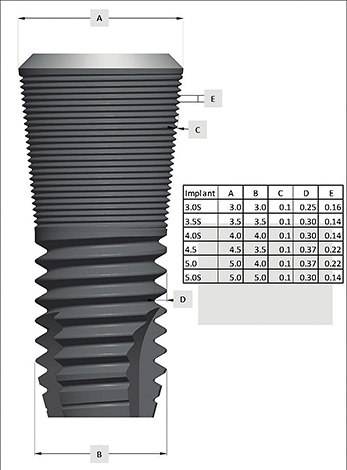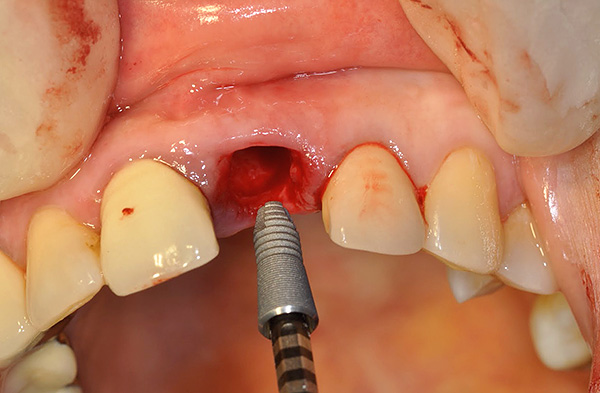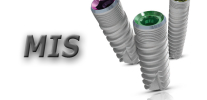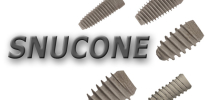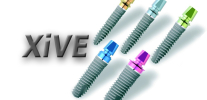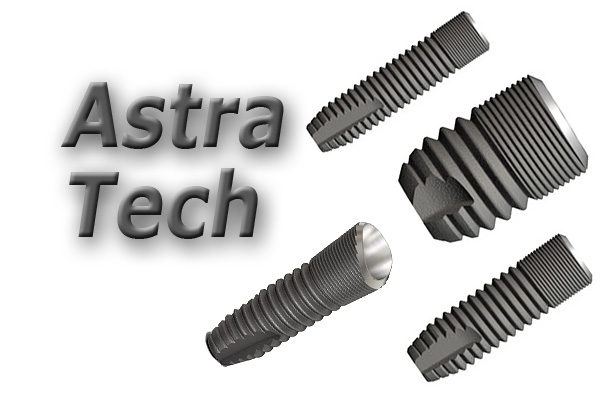
Today on the market there are more than 20 companies involved in the development and production of dental implants, and the products vary quite a lot not only in price, but also in technical characteristics and quality. Among this diversity, inexpensive brands (Israeli, Russian, Chinese), mid-price segment (American, korean) as well as premium (German, swedish, swiss).
Next, we will consider one of the most expensive implants corresponding to the premium segment - Astra Tech implants (Astra Tech, Sweden). They are manufactured by the Swedish company ASTRA TECH Dental (for a long time it was a subsidiary of the medical company AstraZeneca, founded in 1913). Since 2011, ASTRA TECH Dental has been owned by the German concern DENTSPLY, which also produces the well-established ANKYLOS and XiVE implants.
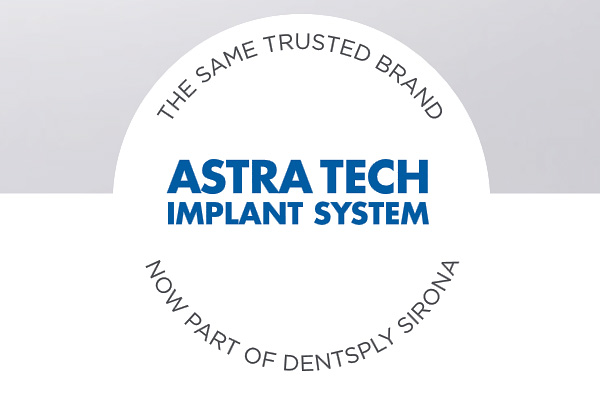
On a note
There is an opinion that in practice it does not really matter which implants to choose - they say, both expensive and cheap products will last equally long in the competent and professional hands of an implantologist. This is partly true, however, the difference in the average survival rate of cheap implants and premium products can reach an impressive 5% (for example, 93% versus 98%).
Other pitfalls associated with savings are also possible: sometimes aesthetics are lower, sometimes poor-quality implants even break several years after installation (it is the titanium “screw” that breaks). Here is an example of a review on our website when a poor-quality implant just broke:
“The implant is 5 years old, he is broken. Dentegris company, my experience is better not to take risks! Replacing the implant itself (bolt) for me is not a consolation, because all the stress and worries fall on me. I just didn’t have one tooth, and now after a breakdown I need an operation to remove the implant that has taken root. ”
Helena
Now let's try to find out why Astra Tech implants are considered one of the best on the market (inferior, perhaps, to brands such as Straumann and Nobel Biocare). Do these implants really include the technological solutions critical for an ordinary, ordinary patient, or is it mostly worth considering this as a marketing ploy of the manufacturer? ..
What is first of all useful to know about Astra Tech implants: their key advantages and disadvantages
Perhaps one of the most important features of Astra is a long presence in the market, as well as the presence of a very extensive research base. All technologies that have been developed and patented have been tested for decades and the experience of hundreds of thousands of patients.
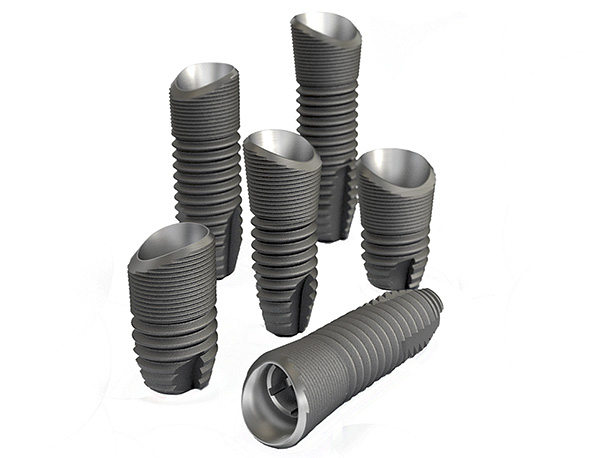
For example, the conical connection of implants and abutments has been used by the company since 1985, the surface with the patented name TiOblast - since 1990, the replaced OsseoSpeed improved surface - since 2005, the MicroThread micro-thread in the neck area of the implant - since 1991 (a little lower we consider these technologies in more detail).
On a note
And now for comparison: when installing implants of which company, it would be calmer for the patient (and doctor) - a young Chinese company, which has been on the market for 4 years, or still, when installing Swedish implants from Astra Tech, which has experience in the field of dental implantation more than 30 years?
As for technology, any successful system of dental implantation is based not on any one advantage, but on a complex of effective technological solutions. The implant is able to properly serve the patient for many years only when everything in his design is balanced and thought out to the smallest detail in order to work reliably in a single complex.
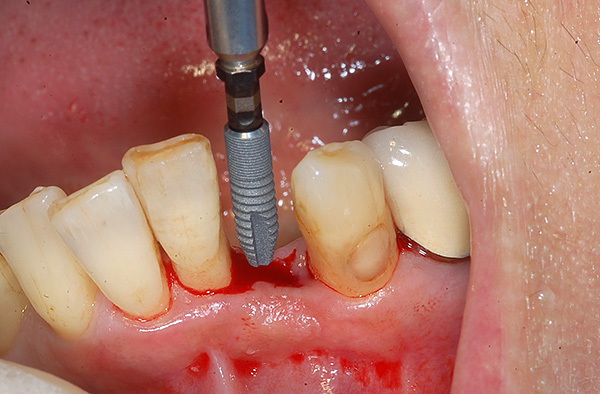
On a note
At dental implants almost everything can influence the result: the degree of purity of the titanium from which the implant is made, the nature of its surface and thread, shape, quality of the connection with the abutment, etc. For example, vanadium impurities in titanium ways to reject structures over time, poor connection with the abutment - to the accumulation of bacteria, an unpleasant odor from under the abutment and even peri-implantitis, an unsuccessful thread - to a poor distribution of load on the bone, due to which bone tissues can gradually atrophy (dissolve).
And this is only a small part of all aspects taken into account when creating the implantation system. The implantation system includes not only many types of various implants for different clinical cases, but also related components, as well as the instruments used by the implantologist.
Speaking about Astra Tech implants, it can be noted that this is a good example when a product is thought out and refined to the smallest detail. According to the reviews of practicing implantologists, it is very convenient to work with the Astra Tech system, and it allows even in difficult clinical cases to achieve high treatment results from both a functional and aesthetic point of view.
Let's note some of the most interesting technologies used in the production of Astra Tech implants ...
OsseoSpeed Surface as a Factor in Good Implant Engraftment
Today, most dental implant companies provide a rough, porous surface for their products. Various methods are used to create it, but the most basic, which is considered the "gold standard", is sandblasting.
It is interesting:
The nature of the implant surface is one of the most important factors for both quality osseointegration (i.e., engraftment in bone tissue) and for further stability. In the past, dental implants had a polished surface, sometimes with plasma spraying. It was subsequently proved that this is ineffective, and it is much better to achieve the effect of micropore formation on the implant surface - the growing jaw bone cells will actually penetrate into the metal, which will allow the structure to literally fuse with the bone tissue.
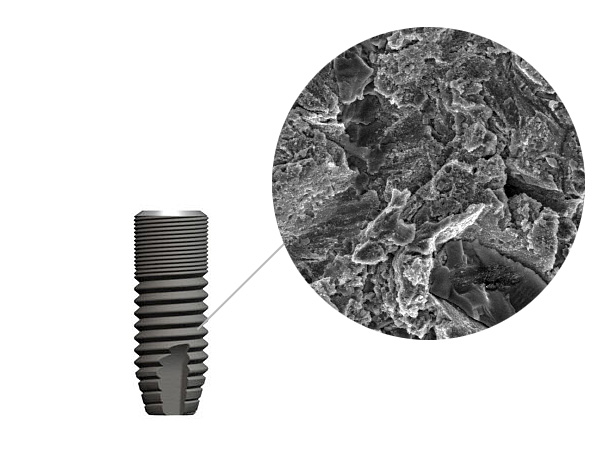
Astra Tech implants were one of the first to have a rough surface. Since 1990, TiOblast technology has been used in Swedish designs - after manufacturing, the implants were sandblasted with titanium oxide sand. It was replaced by an advanced technology - OsseoSpeed, which also involves sandblasting, but additionally followed by etching with concentrated hydrofluoric acid (HF) and the introduction of fluorides into the surface of nanotextured metallic titanium.
What does it give? In fact, fluoride ions are embedded in a rough metal surface. Thanks to them, bone cells grow faster and “grow” into the implant, ensuring its reliable fixation (engraftment) in a shorter time than if there were no fluorine ions in the implant.
Below are photos of the OsseoSpeed surface taken at different magnifications:
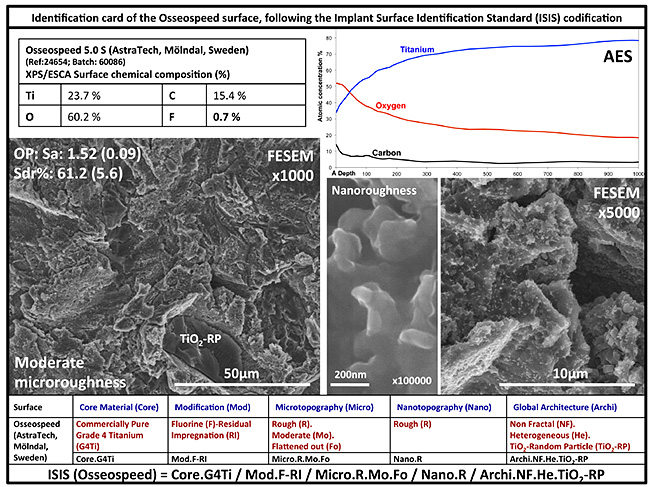
On a note
A plus is the fact that fluoride ions make the bone around the implant more dense, chemically binding to calcium ions - this is especially important during the first weeks after implantation, since the primary structural stability can decrease a week or two after the procedure due to a natural decrease in density bones in response to injury. It is this stage of engraftment of the structure that is the most responsible, and it is during this period that the positive effect of fluorine on the osseointegration process is manifested.
OsseoSpeed technology is used only in Astra Tech implantsIt has been approved for use since 2003 (in clinics in the USA and Europe), however, it has only been used in mass production since 2005 - extensive clinical trials have been conducted for a long time.Thus, in world practice, Astra Tech implants with OsseoSpeed surfaces have been used for more than 10 years, including in our country.
MicroThread prevents gums from sagging
Modern classical implants are, in fact, metal screws with one or another thread (each manufacturer has different options) - the implant is literally screwed into the bone, like a self-tapping screw into a tree. According to recent studies, the combined (differentiated) thread along the entire length is considered the best - with a denser pitch in the cervical region (at the apex) and rare turns in the lower part of the implant.
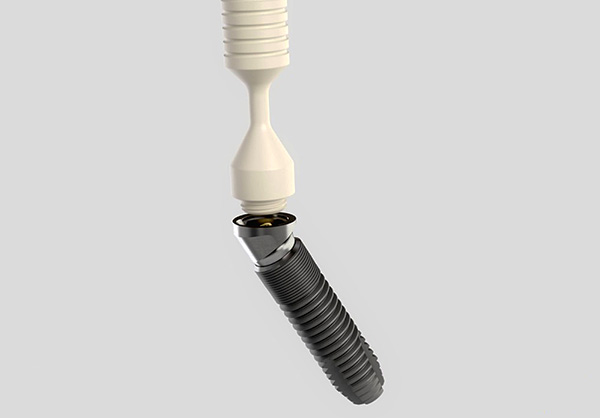
Not all implants on the market have combined threads. Astra Tech implants are equipped with just such a thread - with a large pitch in the apical part and with a small pitch from above.
On a note
MicroThread's patented thread did not appear immediately. Before her birth, more than 800 different shapes and sizes of micro-threads were analyzed, until the one that showed the best results in clinical trials was selected.
The specific thread of Astra Tech implants helps protect the patient from one of the biggest problems after implantation - from the loss of marginal bone.
On a note:
The word "marginal" in Latin means "edge", "border", that is, at the junction of two environments or elements. With regard to dentistry, marginal bone is the most extreme, marginal bone, which borders the gum area. Its loss is fraught with the fact that the gum sags along with the bone - the aesthetics of the dentition are violated, the metal implant can even be exposed. Sometimes visually this is noticeable only many years after implantation.
An example of a gum subsidence with an implant exposure is shown below in the photo:
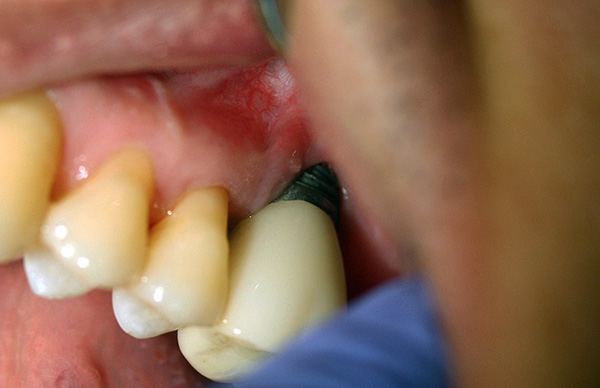
It is worth noting that Astra Tech is one of the few companies that attaches particular importance to maintaining the level of marginal bone. According to existing standards, marginal bone loss of 1 mm is allowed during the first year after implant placement and 0.2 mm in the following. That is, within 5 years, the bone can be reduced by about 1.8 mm - and this will be considered the norm.
So, it is useful for an ordinary patient to keep in mind that Astra Tech has managed to achieve fairly high results in this direction. According to a summary of five-year studies, during this time the bone decreases by no more than 0.3 mm (this is 6 times less than normal). And this means that we can talk about the long-term preservation of aesthetics, because along with the bone, an even gingival contour is supported.
Conical Seal Design implant / abutment connection
The conical connection of the implant and the abutment Conical Seal Design is another technological solution by Swedish scientists.
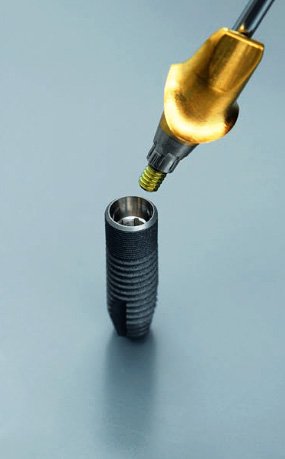
In general, today in dentistry several types of implant-abutment compounds are used:
- The first type is the “internal hexagon” (the most common option), in which the abutment hexagon is immersed in a similar implant hexagon;
- The second type is the external hexagon (the abutment is placed on top);
- And the third type is a conical connection, which can be complemented by a polyhedron (with 3, 6 or more faces).
It is impossible to say unequivocally which one is better, since one and the same type of connection in one company can ensure reliable fixation of the abutment on the implant without micro-gaps, while the other can be of poor quality.
Thus, the emphasis in advertising on the fact that the connection of the implant and the abutment is precisely conical, and not some other, is more likely just a marketing move than a unique and important technological solution.
However, a really significant advantage of the conical connection of Astra Tech implants is that it is made with high precision - the abutment fits very tightly into the cavity of the implant, without the slightest gaps and gaps, covering the entire inside of the bacteria from the oral cavity (and therefore there will be no smell and no reasons for inflammation adjacent tissues with the development of peri-implantitis). In addition, the ideal geometry minimizes the mobility of the joint - the abutment and crown (or prosthesis) will be firmly fixed during the entire life of the artificial teeth.
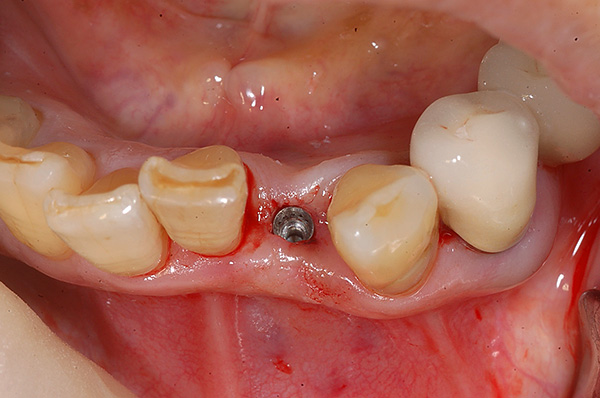
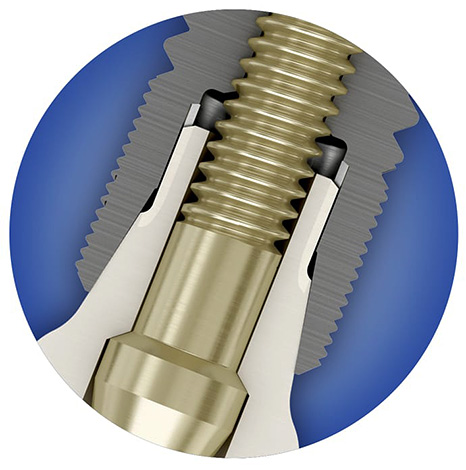
An important feature of the Astratek compound is that the abutment enters the implant deeply, that is, the main load is transferred much lower than the marginal bone, which allows it to be protected from resorption.
Other Important Features of Astra Tech Implants
Today, most dental implants, as well as abutments for them, are created from titanium and its alloys. As for the Astra Tech implants, there is a nuance here: they are created from commercially pure titanium of class 4 (ASTM F 67-00 Grade 4 standard).
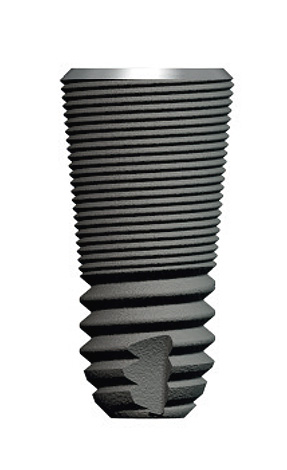
On a note
In cheaper implants of other brands, impurities of foreign metals (usually vanadium, aluminum, iron) are often present, which increases the risk of allergies and complicates the process of “fusion” of the implant with the jawbone. Meanwhile, it has been proven that ultrapure titanium is the best option (albeit more expensive), since it is biocompatible with our body, does not reject it and does not cause allergic reactions.
Swedish implants Astra Tech are color-coded, individually sterile packaging and their own serial number - this allows in case of occurrence complications Contact the manufacturer for a warranty. Products are delivered in ampoules containing water and alcohol - so the implants are better stored, and dust and germs do not enter the porous surface.
What does the patient overpay for choosing Astra Tech implants?
So, we highlight the significant advantages of Astra Tech products (over some cheaper implant systems), which in some cases really justify the high price:
- The Astra Tech implantation system is one of the few in the world whose successful application has been confirmed for decades and many independent clinical trials;
- Minimum restrictions for treatment - in the product catalog there is a large number of implant models of various lengths and diameters, among which you can choose the best option for almost any clinical case (far from all implantation systems have this possibility);

- There are no strict restrictions on prosthetics - you can fix any crown, and thanks to a wide range of abutments, the dental technician will not have to “twist” and adjust to the implant;
- In production, high-purity titanium without impurities is used, which contributes to better osseointegration of the implant and eliminates the occurrence of allergic reactions (including over time);
- The survival and survival of implants are among the highest in this area, which, again, is confirmed by lengthy research;
- Accelerated terms of implant engraftment and bone tissue regeneration around it, which is achieved by the presence of a porous surface with fluorine;
- Minimal loss of marginal bone tissue - this directly affects aesthetics (the normal position of the gums around the crown remains for many years);
- Easy care and no risk of inflammation of nearby tissues due to the high-precision conical connection of the implant and abutment (without micro-gaps).
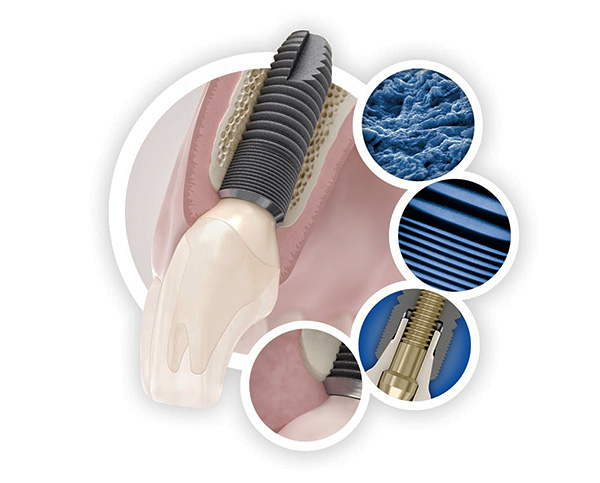
Nevertheless, when choosing Swedish implants Astra Tech, one should take into account the associated disadvantages. The most obvious of them is the high price (about 50 thousand rubles per installation of one implant, which can be almost 2 times higher than the installation of an economy-class implant).
The logical consequence of the high price is the second minus - the relatively small prevalence of Astra Tech products in the Russian market. In practice, this means that only a few specialists own this system.. Therefore, finding a suitable dentistry and specialist will turn out far from every city.
Line of implants
As of 2018, Astra Tech dental implants are divided into three types in the catalog: X-Small (yellow marking, diameter 3 mm), Small (marking the color of sea water, diameters 3.5 and 4.0 mm) and Large (lilac marking , diameter 4.5 and 5 mm).
Designs differ not only in size (length and diameter), but also in shape. For example, the OsseoSpeed TX 3,5 S implant is shown below - the letter “S” means the cylindrical shape of the product.
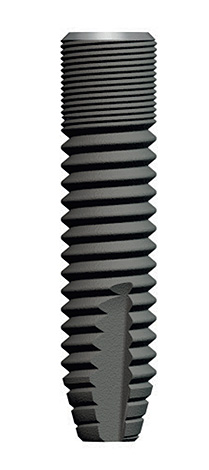
Cylindrical implants are more suitable for two-stage implantation, when the final prosthetics (installation of the crown, for example) is performed after complete healing of the tissues, which takes about 4-6 months.
But the OsseoSpeed TX implants without the letter “S” in the designation have a conical shape of the upper part, which improves their primary stability and allows the use in single-stage implantation techniques when the denture is immediately installed on the implant.
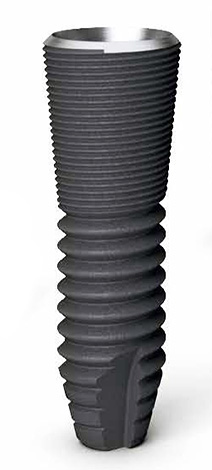
Also in the catalog there is a kind of novelty - Astra Tech TX Profile implants with a beveled tip profile. They are intended for installation in an asymmetric bone, the height of which differs from the lingual and buccal sides (such a bone is usually shorter on the lingual side).
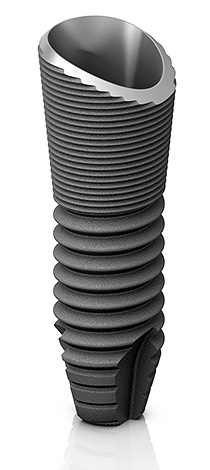
Active tests in this direction were started back in 2011, and today it has been established that the beveled profile of the structure with an asymmetric bone of the alveolar ridge is an ideal solution for maintaining aesthetics in the implant area for the long term. With a standard implant profile (straight), the protruding portion of the bone will atrophy over time, leading to sagging gums.
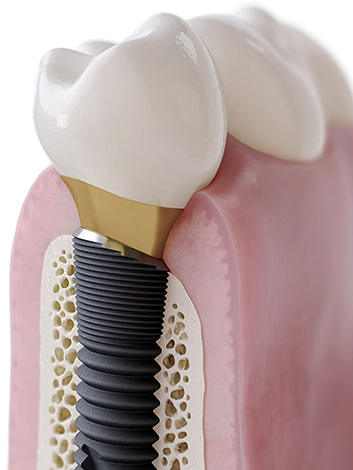
With the beveled profile of the implant, the load is transmitted to all areas of the bone tissue, which avoids its atrophy.
Astra Tech Abutments
It is important to understand that a high-quality implant is only a part of the entire denture design, which includes other very important components - an abutment and a crown (either a bridge or a complete prosthesis).
Separately, it is worth mentioning the abutments produced by the Swedish concern Astra Tech.
On a note
An abutment is the connecting link between the implant located in the bone tissue and the crown (or other prosthesis) that is located above the gum. As a rule, an abutment is an independent element, although sometimes an abutment and an implant can be a single, integral structure.
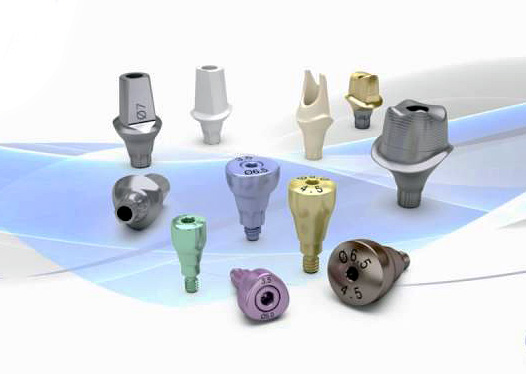
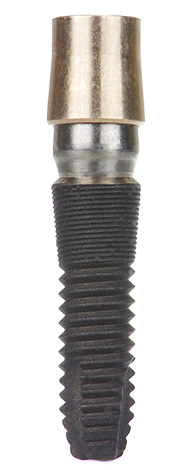
Astra Tech is one of the few companies that creates not only titanium, but also non-metal zirconia abutments, including inclined and individual ones. It is important that the range of abutments in the catalog is thought out in detail, and the doctor will be able to choose the right design even in difficult clinical cases.
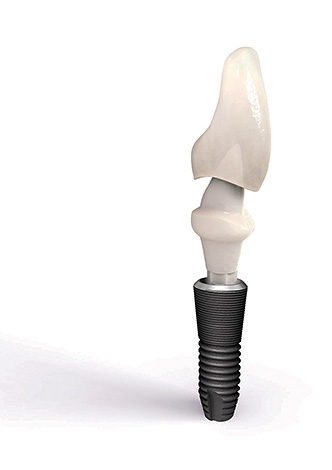
It is interesting
Traditional titanium abutments have a gray metallic color and sometimes can be seen through the crown (which would be especially unpleasant when installing them on the front teeth). But zirconia has a white color (it can tint in yellowish - the color of the enamel of living teeth), and, like tooth enamel, it is partially transparent material. Thus, the use of zirconia abutments allows you to achieve maximum aesthetics - an artificial tooth will be practically indistinguishable from its native, natural ones.
What about rejection and the lifespan of these implants?
Astra Tech implants have one of the highest percentages of “survival” - from 98 to 100% over 7 years. This is a lot or a little compared with 92-94% for some cheaper brands - everyone can decide for himself, but this is one of the best results in the field of dental implantation.
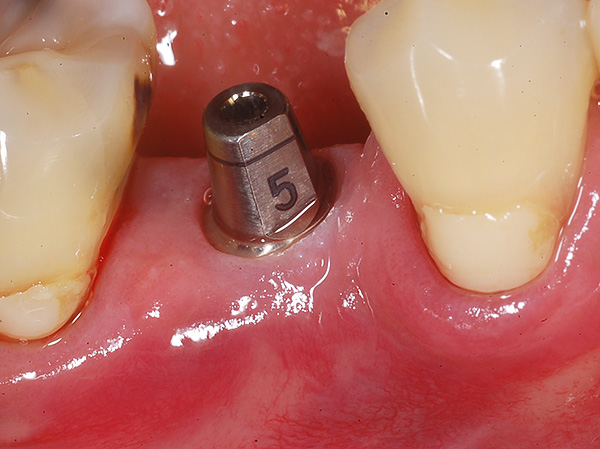
As mentioned above, such high rates are achieved by a set of solutions: firstly, due to the high purity of titanium, secondly, due to the microporous surface of the implant with fluorine content in it, and thirdly, due to the preservation of the marginal zone of the bone.
Real implant life Astra Tech in most cases - more than 20 years, which is confirmed by clinical studies. Provided that a high level of hygiene is maintained, there is reason to assume that for many patients the implants installed will last a lifetime.
On a note
It is important to understand that the implant warranty from the manufacturer and the clinic guarantee that installs it are not the same thing.Astra Tech provides a lifetime warranty on its implants, but what happens in practice depends largely on the implantologist and patient. It is important that the implant is matched to the clinical case and installed professionally.
Usually, when prosthetics on an implant, clinics give a guarantee of about 2 years. That is, for example, if the implant does not take root within the first 3-4 months, then in most cases the fault will lie with the doctor - which means the installation was poorly performed. But if the design begins to be rejected much later (for example, after 7-10 years) - the patient himself is usually to blame. For dental implants to last a long time, it is important to carefully monitor oral hygiene and periodically visit a doctor for preventive examinations (by the way, this is a mandatory requirement to maintain the guarantee that clinics give).
The cost of prosthetics on implants Astra Tech
If you objectively evaluate all of the above, then Astra Tech implants, in comparison with products from the economy segment, really have a large number of advantages, and among the most important ones are confirmed reliability and durability. If everything is done correctly, then the Swedish implants can actually last several decades.
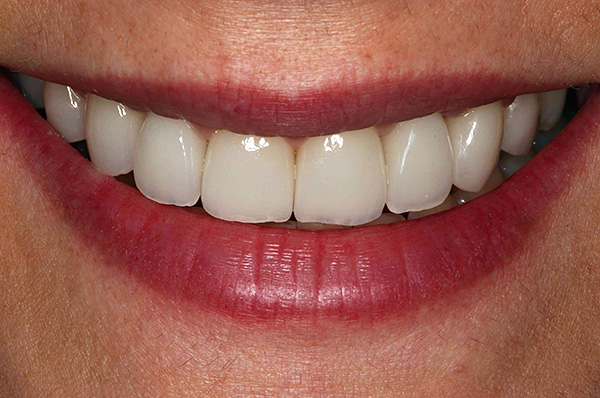
However, the price of such implants is one of the highest on the market (this is a premium class). Not all patients are ready to pay from 50 thousand rubles only for the installation of an implant (and this is without a crown!). If the treatment is “turnkey”, then the cost of the Astra Tech implant can reach 80 thousand rubles for prosthetics of one tooth. And when you have to prosthetize several teeth, then the price tag easily grows into several hundred thousand rubles.
If the financial situation is tight, as an alternative, you can choose a little less expensive, but also very high-quality IMPRO implants or XiVE Friadentas well as affordable Israeli Alpha bio or mis. With the participation of a highly professional implantologist, even relatively inexpensive implants are likely to last at least a couple of decades (provided that the patient himself will not forget about hygiene).
If you have experience with dental prosthetics on Astra Tech implants, be sure to share the information by leaving your review at the bottom of this page.
A good example of a chewing tooth prosthesis on an Astra Tech implant
Doctor's comments on different implantation systems: which one to choose?

